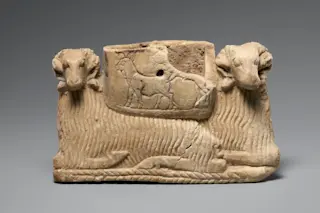Almond milk is a modern-day fixture of the conscious-eating movement. Of all the non-dairy milk alternatives lining store shelves, almond milk is the most popular among consumers. But the nut milk isn’t just another hipster trend having a moment at your local organic grocery store. This is a beverage with staying power — and we aren’t referring to the carton your vegan cousins left in your refrigerator a couple of months back that still hasn't gone bad.
Almond milk has been a fixture of European cookbooks since at least the 1200s, as it was seen as a nutritious alternative to meat and animal-based milk during fasting periods like Lent. And some research indicates that almond milk’s history might go back even farther in the Middle East.
“The origins are a little obscure. There are people who claim that it came with Arabic cuisine or even Baghdad cuisine,” says Ken Albala, ...















